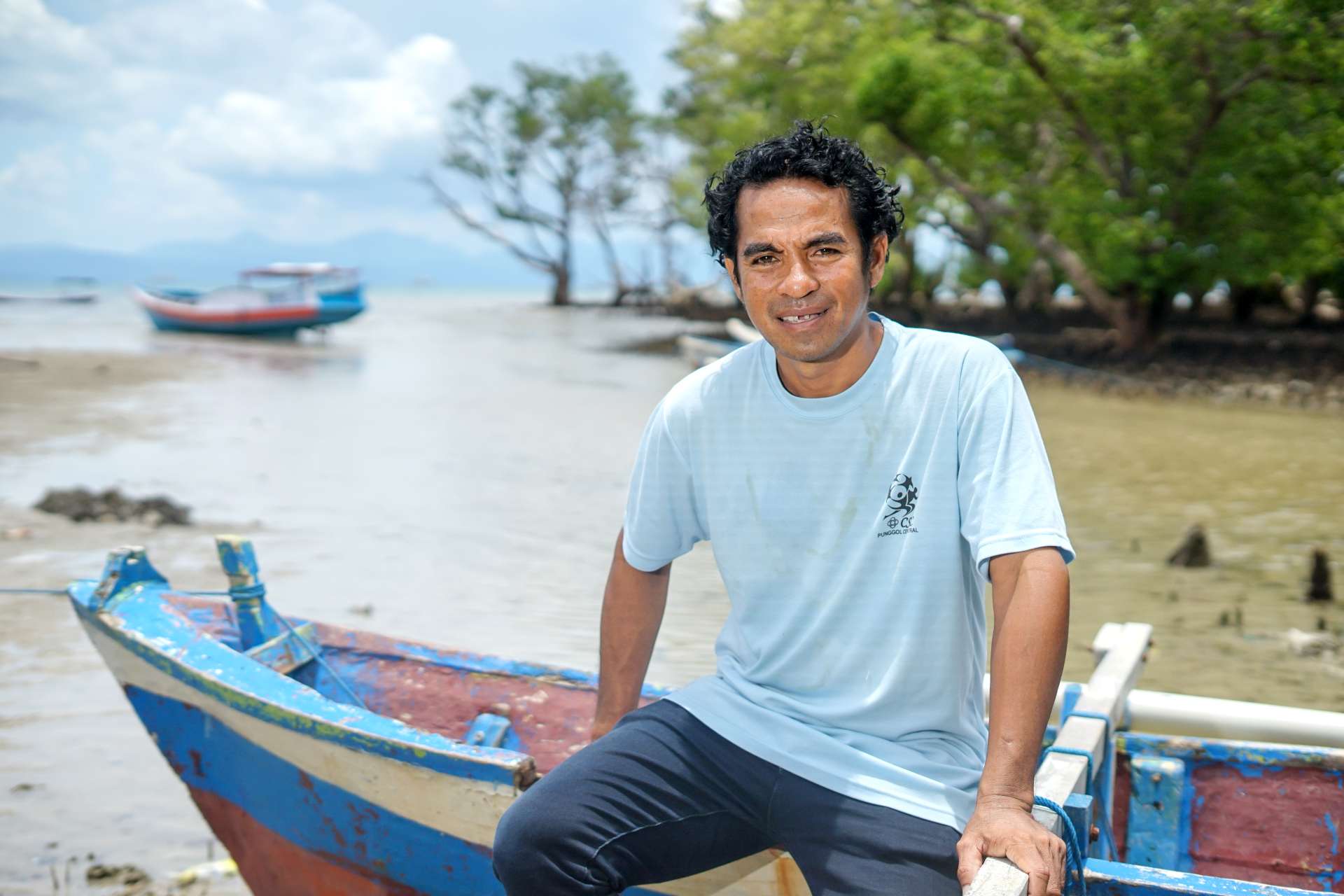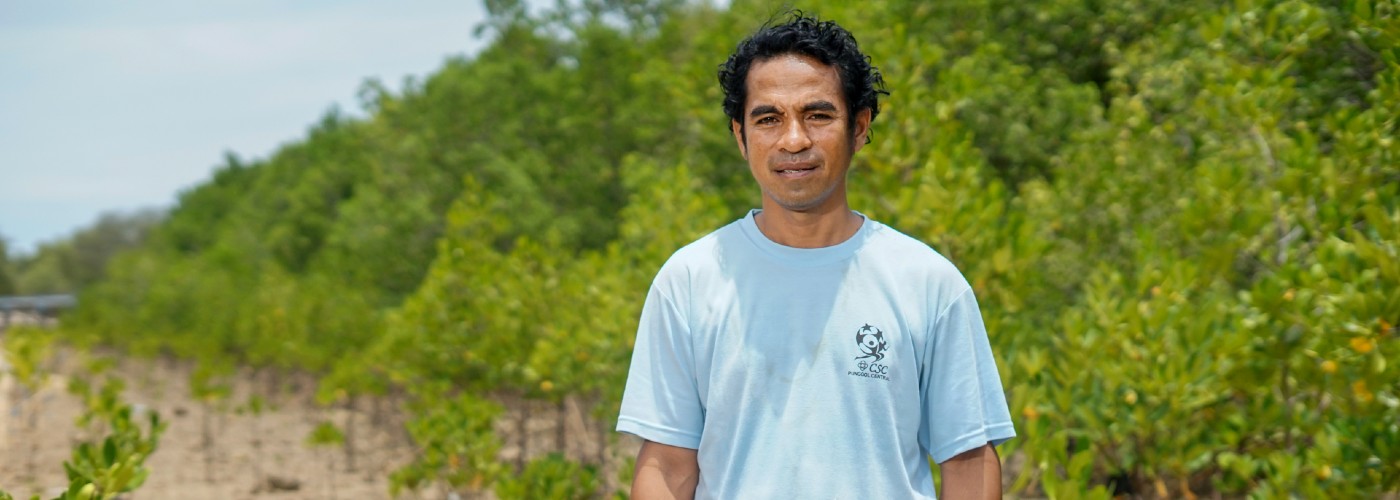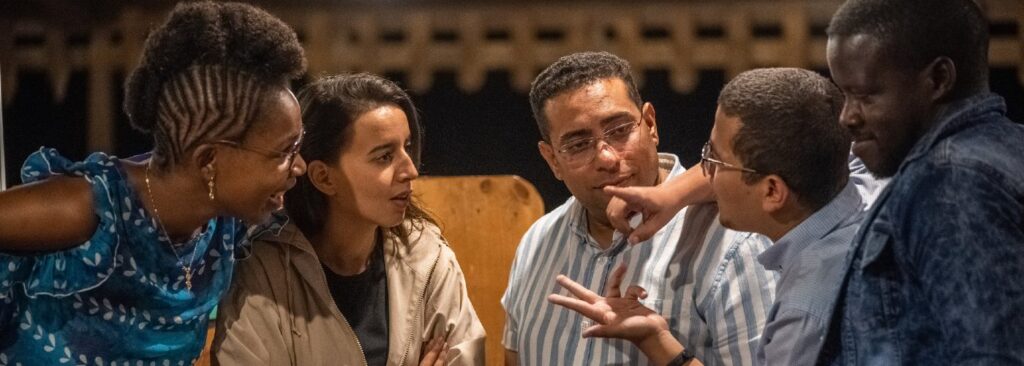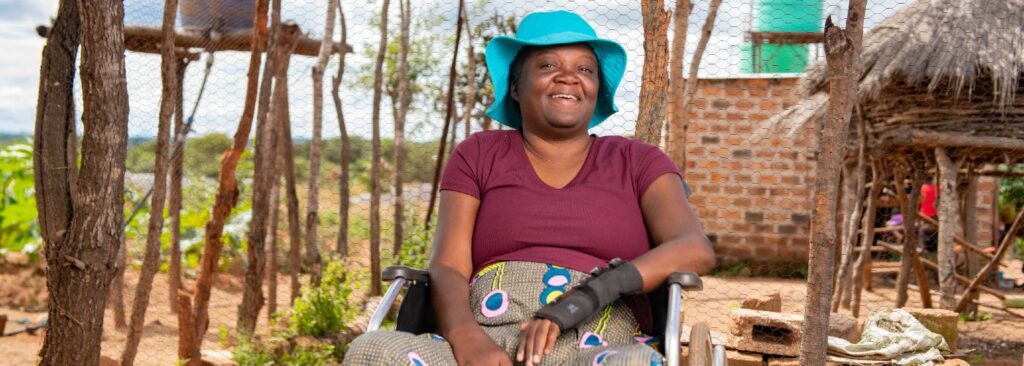Restoring mangroves to protect homes and livelihoods
Joni J. Messakh lives in Tanah Merah Village in Indonesia, a community that is mostly dependent on fishing activities. His family has become well known for their work to save the mangrove trees that are key to preserving the community’s safety and livelihood.
Restoring mangroves
Located a one-hour drive from the city of Kupang, Tanah Merah has lived through years of hardship. Between 1987 and 2004 the area was subject to sand mining that caused massive erosion and turned the tidal wave season into a nightmare. Tidal waves regularly destroyed homes and wiped out shellfish and crab populations.
Joni and his late father decided to do something about it. Together they started to restore the mangrove population. A mangrove is a shrub or tree that grows in coastal saline water and is adapted to live in and resist harsh conditions. Mangroves protect nearby areas from tsunamis and extreme weather events and support sustainable coastal and marine ecosystems.
Joni has so far planted 20 hectares of mangrove forest and educates local communities about the importance of mangrove forests. “People tend to think mangroves are useless,” he says. “They think it’s more profitable to plant coconut trees.” Convincing coastal communities to restore and protect mangroves is complicated by the low income level of the villagers. “People around here often cut mangrove tress to build their house,” Joni explains.

A victory over nature
Joni’s persistence payed off. His mangrove restoration work played a crucial role in protecting his community from the devasting impact of last year’s tropical storm Seroja. While the storm destroyed many nearby coastal areas like East Nusa Tenggara, causing insurmountable physical and economic devastation, Tanah Merah Village suffered no significant damage. The mangroves withstood Seroja‘s onslaught and protected the area from the storm surge.
Joni’s mangroves also gradually improved the local economy. Today, local fisherfolk no longer have a hard time finding crab and shellfish. Numerous marine species, including fish and shrimp, also use mangroves as nurseries. In this way, mangroves act as a critical source for replenishing some of the ocean’s fish stock.
A legal and political victory
All these advantages helped Joni convince the villagers to protect mangroves under a customary law. “According to the new customary law, you have to plant two or three new mangrove trees for every one you cut down. There is also a fine of Rp 100.000 that goes toward replanting the mangroves,” he explains.
Joni continues to raise the issue of mangroves in village meetings with the local government. And his efforts have proven successful. The village government has put mangroves on the list of priority issues, and regulations regarding mangrove forests and the prohibition of cutting mangroves trees will be included in the Village Regulation in 2023.
When asked about his expectations, Joni is positive. “Even though protecting mangroves is something I intend to continue doing, I hope it won’t be just the work of one or two people anymore. Everyone must do their share. This year we hope to pass the Village Regulation (Peraturan Desa), which will protect the mangroves even more. And I also hope the village of Tanah Merah will become a mangrove ecotourism destination.”
Voices for Climate Action
We work with Joni through our Voices for Just Climate Action program, which aims to ensure that local civil society and underrepresented groups take on a central role as creators, facilitators and advocates of innovative climate solutions. We help them organize and campaign effectively and provide a network in which they can reinforce each other. The program also works to create widespread societal support for locally-shaped climate solutions, like Joni’s mangrove restoration work.









